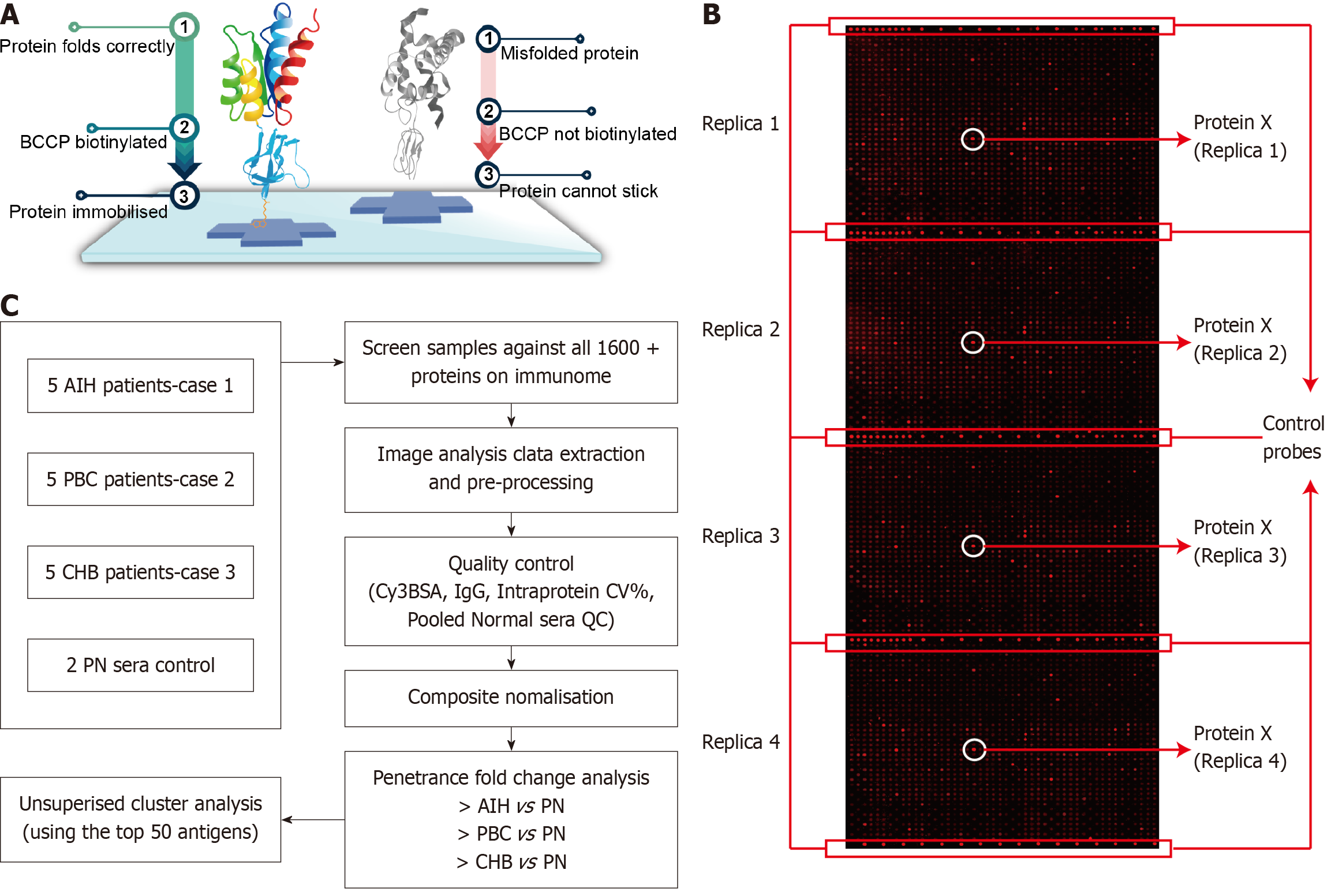Copyright
©The Author(s) 2025.
World J Gastroenterol. May 28, 2025; 31(20): 104891
Published online May 28, 2025. doi: 10.3748/wjg.v31.i20.104891
Published online May 28, 2025. doi: 10.3748/wjg.v31.i20.104891
Figure 1 Overview of the IMMUNOME™ Protein Array workflow used for autoantigen discovery.
A: Schematic representation of the biotin carboxyl carrier protein fusion system. The biotin carboxyl carrier protein tag facilitates proper protein folding and surface presentation, thereby preserving the native conformation of the expressed proteins; B: Representative layout of the Sengenics IMMUNOME™ slide. The array contains more than 1600 human proteins spotted in quadruplicate. Positive control probes include Cy3-labeled bovine serum albumin, spotted in replicates of 4 or 5, and human IgG; C: Workflow diagram for protein array data analysis. Antigen signals were ranked according to penetrance frequency (%) and penetrance fold change (primary biliary cholangitis/autoimmune hepatitis/chronic hepatitis B vs pooled normal controls). The top 50 autoantigens were identified using unsupervised cluster analysis based on these parameters. BCCP: Biotin carboxyl carrier protein; Cy3BSA: Cy3-labeled bovine serum albumin; CV: Coefficient of variation; QC: Quality control; PBC: Primary biliary cholangitis; AIH: Autoimmune hepatitis; CHB: Chronic hepatitis B; PN: Pooled normal controls.
- Citation: Zeng ZY, Huang ZX, Wang YR, Xie LK, Lin YP, Liang Y, Liu ZY, Li DL, Zhang XY. Anti-RPL30 as a novel biomarker for enhanced diagnosis of autoantibody-negative primary biliary cholangitis. World J Gastroenterol 2025; 31(20): 104891
- URL: https://www.wjgnet.com/1007-9327/full/v31/i20/104891.htm
- DOI: https://dx.doi.org/10.3748/wjg.v31.i20.104891









